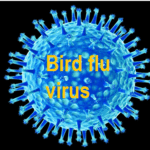The Listeria monocytogenes outbreak in the Boar’s Head product, which began in May of 2024 with a few isolated cases, quickly escalated in severity. The outbreak had resulted in 60 hospitalizations and 10 fatalities. Boar’s Head issued a recall on July 30, 2024. Epidemiologic, laboratory, and traceback data showed that meats sliced at deli counters, including Boar’s Head brand liverwurst, were contaminated with Listeria monocytogenes and caused illness in people. In July 2024, Boar’s Head recalled all deli products made at the Jarratt, VA, facility. Numerous problems were found in the Jarratt facility, including Product residue on equipment, blocked drains,...
ruth
ruth
Avian influenza H5N1 is a type A bird flu virus, typically, it does not infect people. Human infections have most often happened after close or lengthy unprotected contact with infected birds. The spread of bird flu viruses from one infected person to a close contact is very rare. Six main hemagglutinin (HA) subtypes of bird flu viruses have infected people to cause acute respiratory illness. Among these, H5N1 and H7N9 viruses have caused the majority of infections. The first description of avian influenza dates to 1878 in northern Italy. In 1997 the first human case related to the H5N1 virus...
ruth
There has been a barrage of bad news about food safety lately. Ten people died after eating Boar’s Head deli meat connected to a Listeria monocytogenes outbreak and dozens were hospitalized. An E. coli outbreak linked to onions served on McDonald’s Quarter Pounders. A massive egg recall that thickened 93 people with 34 hospitalizations and a large outbreak attributed to Salmonella Typhimurium cucumbers with 100 people sickened. The recalls came one after the other and dominated the news. Data from the CDC shows that the number of outbreaks has increased from last year, but not by much. When a food...
ruth
In 2019, the FDA and others began a multi-year study in Yuma County, Arizona, to improve understanding of the environmental factors that may impact the presence of foodborne pathogens in the Southwest agricultural region. The goal is to identify new information about factors that significantly contribute to the introduction, persistence, growth, spread, and die-off of pathogens that could contaminate produce before harvest. Airborne transmission of STEC was documented on numerous occasions at several locations adjacent to nearby large livestock. The water quality and the vital role of localized southerly winds in transferring organisms from animal-feeding associated dust in northward directions....



